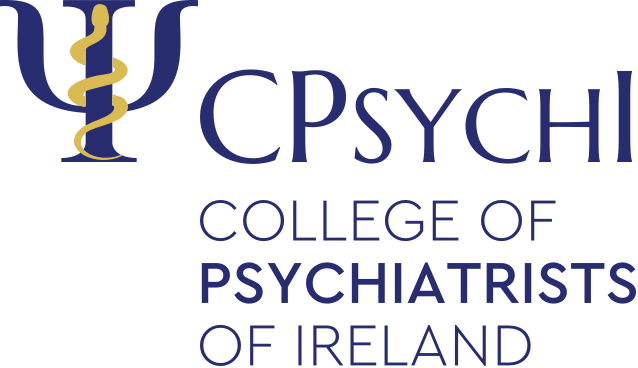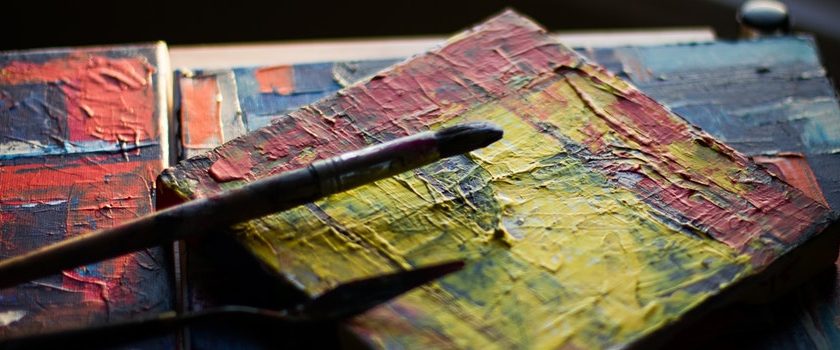Blog
Two years ago, Orna Cunningham was in a very dark place. Unemployed and lonely, she felt trapped in a spiral of negative thoughts. Then she found an old roommate’s paints.
This article, written by Orla Cunningham, appeared in the Independent.ie on 21.02.2019.
In September 2017, I moved into the third floor of a house in Toronto, to be closer to the boyfriend with a broken leg I was caring for. A week before the cast came off, we broke up. Alone and single at 29, I sat in an empty bedroom and took stock. I was alone, but more accurately, I was lonely. My chest ached. I felt discarded and exhausted.
That year had hollowed me out. As well as the break-up, I’d lost a good friend, a job I needed, and was now working in a stultifying data entry role instead. My days had been spent in a sort of permanent, low-level anxiety as I worried about whether or not I would get the permanent residency I so badly wanted.
The last roommate’s legacy was nothing special: a discarded collection of rusting pans, a dire flea infestation, and a bag of acrylic paints. My first weeks in the house, I left the paints on the top shelf of my wardrobe and waited for someone to phone and collect them. But no one ever did. So I cleaned, killed the fleas, and started using the paints.
“There’s an inherent therapeutic value in art making,” says Liam Plant. He’s an art therapist working with clients at the Oscailt Centre in Ballsbridge, Dublin. He’s been in the business of art therapy for over 30 years, in Ireland and England. “That goes back to when people first started making art.”
Art therapy as a formal psychotherapy began around the Second World War, when “shell-shocked” soldiers (what we would now call PTSD sufferers) began making positive emotional recovery through creating art. It’s used to treat a vast array of mental illnesses, including difficult-to-treat eating disorders and PTSD. It’s generally integrated with talk therapy. An advantage it offers is its accessibility, especially to those who are too young to articulate their experiences, or who struggle to communicate their distress.
“It can be used with people who are non-verbal, people with intellectual disabilities, people with physical disabilities, children, as well as highly sophisticated adults. It’s just that the therapist’s approach changes with the client population,” explains Plant.
Another advantage, says Social Art Ireland’s Susan Slevin, is that it it can be “faster, in one respect”. “When you’re just talking, you’re dealing with a lot of sense mechanisms, and they’re verbal,” the Galway-based therapist says. “You can get a lot of stories, of justifications, rationalising from a person … but when you actually create images around how you’re feeling, and put your emotions out on the paper, you are bypassing a lot of that, and you get right to the issues.”
For me, recovery through art was a discovery I made in my kitchen one morning. After the pain of the previous year, I found a new relationship, moved house, and I brought the paints. But that winter brought trudging two-hour commutes in the snow, and darkness. My mental health suffered during a bitterly long winter. I was too embarrassed to tell friends. Instead, I started to drown, quietly and privately.
In March, my dull job ended. I took a bar job, but it made me even more miserable, so I quit. On the one hand, I felt this was my chance: to stay at home and write the book I had been chipping away at for two years. My partner even bought me an expensive laptop, but it became an albatross around my neck. My kitchen became a cell. A sense of failure descended on me. I couldn’t write. I was falling apart. I wasn’t socialising.
I didn’t want my friends to think I had become some sort of work-shy layabout, and when I did see them, all I could talk about was my failing mental health.
I cleaned the house every day and felt myself disappearing; a sort of Eleanor Rigby, going crazy at home. I had another job interview lined up at a bar, but in the end I never went. I suppose I didn’t want to rush into another hospitality job I wouldn’t enjoy. My partner tried to comfort me, and I tried to to learn to be comfortable with being alone at home, but it was something I couldn’t do.
I went to the doctor that afternoon instead and was prescribed anti-depressants. Then I went home again, where I lay on the kitchen floor and thought about how trapped I felt, and considered what it would feel like to simply not exist anymore.
The next morning, sitting at the kitchen table in my pyjamas, crying and shaking, with nothing to do, I pulled out the paints and painted a picture of our dog. I laughed at how bad it was and felt an untainted, simple pleasure. I didn’t feel any pressure to be good, or productive. I went to the dollar store and bought cheap canvases and decided to try something new.
Over the rest of 2018, my mental health worsened, but I mastered drawing hands and eyes. I learned how to shade and effect depth, and the importance of negative space and directional light. I upped my anti-depressants and did a therapy course that taught me to reflect on my thoughts. I saw something in my drawings — dark, lone figures. Women without faces; women naked and reaching out, and broken into segments. Women with dark pools for eyes. But whatever it was, it was concrete and it was mine.
“[The clients] own what’s on that paper,” says Susan. “That’s very powerful and empowering at the same time. They’re not being told what it means — they’re actually looking at themselves.”
“It’s literally externalising an internal experience,” says Liam, “in a contained form, so then one can reflect on it with a degree of autonomy, that ‘I have control over this experience, to a degree’.”
“It’s called a bridge,” adds Susan. “It bridges your emotions. It does the talking for you.”
I was delighted I had found something I loved, and I was actually good at it. It bolstered my nearly-absent confidence. Friends asked me to draw things for them; people started offering me money for commissions. I realised one day that I wasn’t just soothing my soul anymore. I was developing a new and important part of my life. But the point of art therapy is not to be ‘good’.
“It doesn’t matter if it’s artistic,” says Liam, “whether the dog looks like a dog, or a camel; the person who drew it knows it’s a dog. The meaning they derive from it — that’s what’s important.”
Susan and Liam (who both did the Masters in Art Therapy at Cork Institute of Technology) recommend checking an art therapist’s credentials with the Irish Association of Creative Arts Therapists before going to one. Not everyone advertising their services has adequate training, they warn. And, they add, though creating art on your own is valuable, a therapist is helpful to give the process of making art meaning.
“I highly encourage people to use creative processes,” says Susan, “but that’s what therapy is — it’s a relationship with a therapist.”
My therapy wasn’t formal — that came later, with CBT and talk therapy — but I had found something that was entirely my own. Even the formation of a habit was helpful, giving my days structure and meaning.
Now, I have something that makes me feel better when little else can. I have a new talent and source of pride. I even have a side hustle.
“That’s what the art process can do,” says Susan. “It’s so soothing. It’s a form, an art of meditation, of mindfulness — it relates to all of those. It’s great for calming the mind.”

